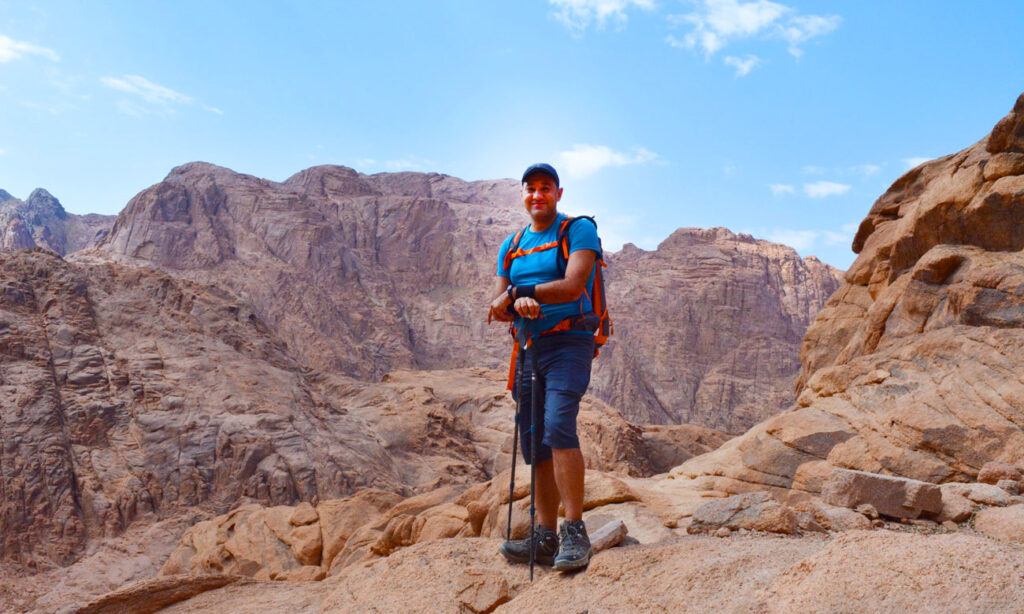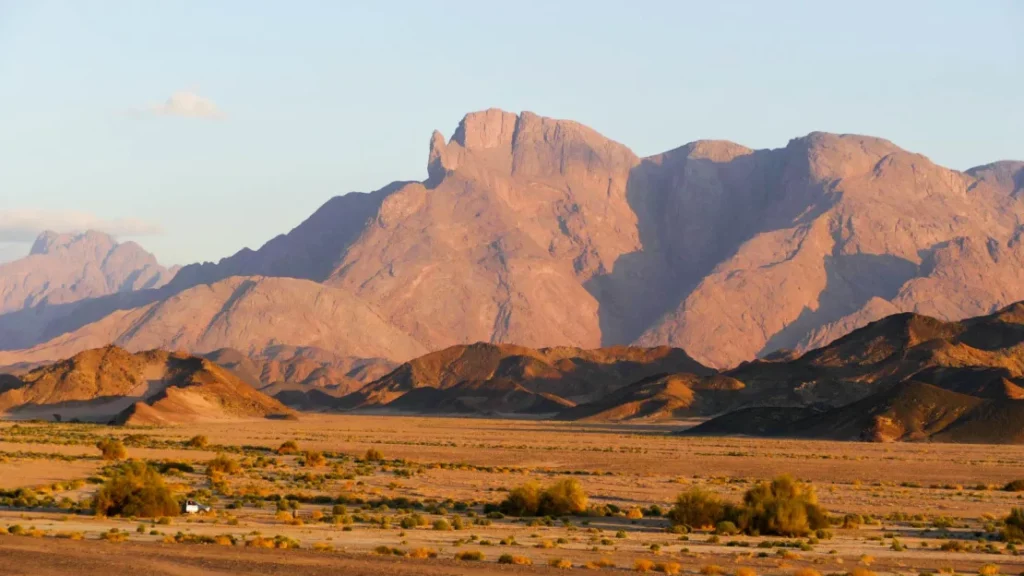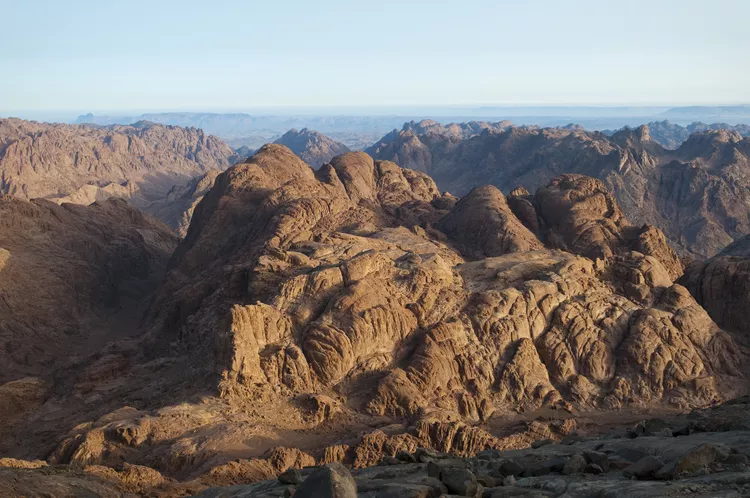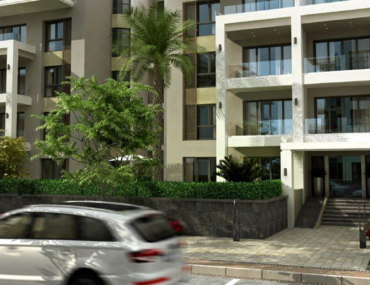The Sinai Mountains in Egypt offer a unique experience for hikers of all levels. Known for its diverse landscapes and breathtaking views, the area features towering peaks, lush valleys, and ancient ruins. Among the notable peaks are St. Catherine, Mount Moses, Mount Abbas, El Galt El Azraq, and the Red Mountain. Each trail offers a distinct adventure, from challenging hikes to more relaxed routes.
One of the most iconic hikes is to the summit of Mount Sinai, where tradition holds that Moses received the Ten Commandments. The surrounding area includes Saint Catherine’s Monastery, home to the world’s oldest continuously operating library, and the legendary Burning Bush. Whether seeking a spiritual journey or simply stunning vistas, the Sinai Peninsula is a must-visit destination.

Hiking in Egypt: Packing Tips
Important: Your Documents!
Anyone hiking in Egypt should carry the necessary documents. Travellers from other countries must have a valid passport and visas. Egyptian nationals need to bring government-issued photo identification. Additionally, having travel insurance is highly recommended to cover any unexpected incidents.
Clothing and Footwear
Hiking Shoes: The rocky terrain of the Sinai Trail demands durable footwear. Hiking boots or tough sneakers are recommended. Breaking in shoes before the trek will help prevent discomfort and injuries. Pack spare laces, as the dry air can easily cause older laces to snap.
Hiking Clothes: Layering is vital. Base layers should be synthetic to wick away sweat and keep you dry. Avoid cotton, as it retains moisture and can be hazardous in cold conditions. Long-sleeved shirts provide sun and wind protection. It’s advisable to wear pants rather than shorts out of respect for local customs. Lightweight, synthetic trekking pants are preferable.
Winter Gear: Winters in the Sinai can be severe, with temperatures dropping below freezing and frequent snowfalls. A thermal base layer, fleece, and a down jacket are essential for warmth. Waterproof covers are crucial for staying dry. Bring a wide-brimmed hat or a sun cap for sun protection, and pack a woolen cap for cold nights. Bedouin shemaghs are useful for covering the face and neck from the sun and wind.
Camping Essentials
Proper sleep gear is crucial for maintaining energy levels during the trek.
Tents: While Bedouins traditionally sleep outdoors, carrying a small, lightweight, waterproof tent provides privacy and protection from insects, sudden rain, and strong winds.
Sleeping Bags: Choose a sleeping bag rated for at least minus 5 degrees Celsius. Adding a thermal liner can increase warmth. Nights in the desert can be cold even in spring and fall.
Sleeping Mats: Rollable foam mats or inflatable mats like Thermarest provide comfort against the hard ground. Foam mats are more durable for arid environments, as sharp rocks and plants can puncture inflatable mats.
Other Camping Gear: Generally, you won’t need stoves and cooking equipment, since Bedouin hosts use campfires and their own utensils. However, carrying a Swiss Army knife can be handy for various tasks.

Hydration and Nutrition
Water: Carry enough water bottles to hold 3-4.5 liters of water. Backpackers often use bladder flasks for easy access to water, though it can be hard to gauge water levels. Having water purification tablets like chlorine dioxide is also wise, as natural water sources may not be reliable.
Snacks: Bring energy-boosting snacks such as nuts, dried fruits, and figs. These provide quick energy during breaks.
Sun Protection
Prolonged exposure to the desert sun necessitates sun protection.
Sunscreen and Sunglasses: Use a high-factor sunscreen and reapply it frequently. UV-protective sunglasses are essential for eye protection.
Lip Balm: A good lip balm is necessary to prevent chapped lips, which are common in the dry desert air.
Safety and First Aid
First Aid Kit: A well-stocked first aid kit is a must. Include band-aids, gauze pads, antiseptics, blister plasters, painkillers like ibuprofen, rehydration salts, and anti-diarrheal medication. Knowing basic first aid can be very helpful.
Emergency Supplies: Even though tour guides carry first aid kits, bringing your own small kit ensures immediate access to essential items.
Personal Hygiene
Basic Hygiene Supplies: Shampoo, soap, and a toothbrush are must-haves. Wet wipes can be invaluable for cleaning when water is scarce. Bring a small bag to dispose used wipes and other trash.
Additional Gear
Headlamp: A headlamp is useful for night-time navigation and tasks around the camp.
Hiking Poles: Optional but beneficial for joint support, particularly on steep or uneven terrain.
Local Currency
Egyptian Pounds: Carry some local currency for any unexpected expenses. Small denominations are useful for purchasing snacks or other supplies along the way.
Understanding Weather Conditions
Seasonal Packing Tips: Trekking season in Egypt ranges from October to April. During fall and spring, days are warm but can be chilly if it’s windy or you’re at a higher elevation. From December to March, temperatures can drop significantly, with regular subfreezing temperatures and frequent snowfalls. Always be prepared for sudden weather changes, including rain, which can lead to flash floods in the mountains.
Efficient Packing
Packing Light: Pack only the essentials to keep your load manageable. A good rule of thumb is to bring three sets of essential clothing items and rotate them over the trek. This minimizes weight while ensuring you have fresh clothes.
Activities to do in the Sinai Mountains Region

Cycling Adventures in Sinai
Cycling across the Sinai Trail offers a unique way to immerse oneself in the region’s stunning landscapes. A notable event in 2011 saw a group cycling from St. Catherine to Nuweiba, covering an extensive stretch of the trail in just one day. This route, beginning from St. Catherine Road and moving eastward to the Gulf of Aqaba, showcases the rugged beauty and challenging terrain of the Sinai Mountains.
Thrill Seeker’s Delight: Rock Climbing
The Sinai Mountains have a long history of climbing, originally used by the Bedouins for hunting. Today, this region has become a hotspot for rock climbing enthusiasts. Climbers can find many challenging spots along the coastal mountains or places like the Red Mountain near the start of the Sinai Trail. The traditional Bedouin knowledge of the terrain adds an extra layer of adventure and authenticity to the climbing experience.
Serenity and Focus: Yoga and Meditation
The tranquil atmosphere of the Sinai desert creates an ideal setting for yoga and meditation. This region, known for its vast and silent landscapes, allows deep introspection and spiritual practices. Several serene spots along the Sinai Trail are perfect for retreats focused on yoga and meditation, offering participants a chance to connect with nature and find inner peace.
Bedouin Cultural Heritage: Art and Stories
The Bedouin people, having lived in the Sinai desert for centuries, possess a rich cultural heritage. Travelers can engage with this unique culture by participating in nightly storytelling sessions along the Sinai Trail. These sessions not only offer a glimpse into the Bedouin way of life but also help in preserving their traditions. Hikers can learn survival skills, natural navigation techniques, and tracking methods. Observing how the Bedouins use the stars and landmarks for navigation can be particularly enlightening.
Engaging with Bedouin culture provides a deeper appreciation of the region’s history and the lifestyle of its people. It’s a valuable opportunity that supports the maintenance of traditional knowledge in an increasingly modernized world.
In short, the Sinai Mountains region presents a diverse array of activities that go beyond just hiking. From thrilling rock climbing adventures to peaceful yoga retreats and immersive cultural experiences, there’s something for every traveler to enjoy. Proper planning and respect for the local culture will ensure a fulfilling and unforgettable visit to this remarkable part of Egypt.



